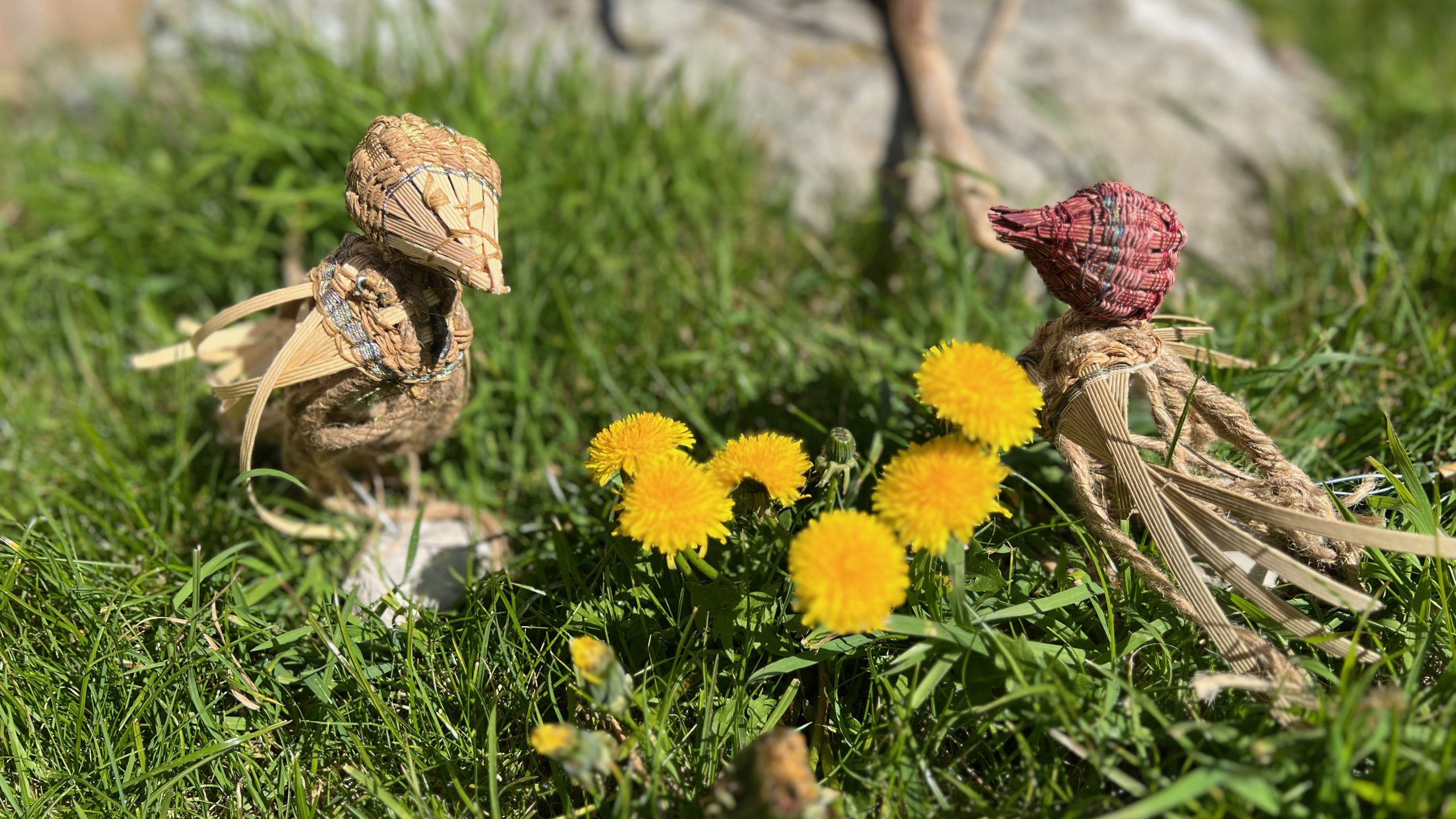
Practice

Performances, puppets, and responsive installations shaped through material-led practices in both analogue and digital environments.These works reflect an ongoing conversation between craft, technology, and ecological awareness. They bring together puppetry, textiles, and interaction to explore how materials can become storytellers
Early Explorations in Puppetry, Physical Theatre & Code
My early practice was shaped by physical theatre, improvisation, and puppetry. I trained in both body-based performance and object animation, working across live theatre, street performance, and devised forms.
Later, during my MFA in Computational Arts at Goldsmiths, I began integrating digital tools into my performance-making. I created interactive installations where sensors, masks, sound, and servo motors responded to human presence. These early works explored how objects and systems could become performers in their own right, using code, motion, and material expression.

Analogue & Digital Conversations
Before Textile Creatures, I explored the blending of tactile craft and digital technology through projection-based installations, voice-reactive masks, and hybrid performances. In these works, analogue textures and coded behavior came together to produce layered, embodied experiences.
These performances, including Working Girl Going to Motherhood, My Name Is, and Look at the Other, delve into themes of identity, transformation, and human-machine boundaries. Each invites the audience into a space where material and digital forms co-author the performance.

Shifting Focus : Material Interference & Textile characters
During my PhD at the Royal College of Art, I developed a practice-led research approach centered on the idea of material interference. I began working with thermochromic inks, conductive threads, and plant-based materials such as seaweed, integrating them into puppet-making and performative textiles.
This research shifted the way I understood storytelling. Instead of directing materials, I explored how they could take on an active role in shaping narratives. My work became increasingly focused on interactions between textiles, bodies, and responsive systems, creating spaces where stories emerge from sensory, non-verbal dialogues between human and more-than-human forces.
This exploration deepened during my PhD at the Royal College of Art, where I developed a practice-led methodology around material interference. I began incorporating thermochromic inks, conductive threads, and plant-based materials such as seaweed into textile characters and performative systems.
These works challenge traditional storytelling by allowing materials to generate movement, change, and emotion. The resulting characters interact with heat, light, or human proximity, often staged on woven surfaces combining both traditional and technological fibers. Stories unfold not through scripts, but through responsive, sensory interactions, that perform more-than human narratives.
Evolving from my PhD research, Textile Creatures is an ongoing exploration of textile-based characters animated with e-textiles. These responsive artefacts react to environmental stimuli creating subtle movements that blur the line between the organic and the engineered. Staged in both natural landscapes and human-designed environments, they invite audiences into a sensory dialogue where materials, technology, and surroundings converge into open-ended stories.

Thermochromic puppet staged outdoor and changing colour with the heat from the sunlight (S.Recoules Quang 2022)

Current Work : Poetic Systems & More-than-human-Storytelling
During my PhD at the Royal College of Art, my practice shifted toward working with materials not just as tools, but as active contributors to storytelling. I developed an approach based on material interference—an exploration of how materials like thermochromic inks, conductive threads, and plant-based fibres could generate movement, change, and narrative when placed in relation with their environment.
This led to the creation of textile characters that behave in subtle, responsive ways. Rather than being fixed or fully controlled, these forms perform through their interaction with temperature, light, or audience presence. They are staged on woven surfaces made from both traditional and technological fibres, forming performative systems where action emerges from material relations rather than linear scripts or mechanical cues.
This shift expanded my puppetry practice into a broader space where textile craft, sensor-based design, and environmental responsiveness come together. It opened new questions about agency, presence, and the potential of materials to participate in storytelling beyond the anthropomorphic or robotic model.


Next Evolution: Materials, Collaboration, & Practice Growth
To continue developing this work, I am seeking opportunities that support both the technical and conceptual growth of my practice. This includes deeper engagement with textile processes that support improvisation, embodied responsiveness, and material experimentation, as well as training in responsive textile fabrication. I am particularly interested in learning techniques such as Saori weaving, which offer a way to embed technology through intuitive and open-ended making. These methods provide alternatives to conventional e-textile approaches by allowing performance to emerge through the process itself.
My focus is on creating performative systems that dissolve boundaries between human and non-human, analogue and digital, crafted and engineered. I work within the spaces where these categories overlap and inform one another. This involves designing with material sensitivity and creating systems that adapt, respond, and unfold through interaction.
I am currently seeking opportunities to expand this work through material research, responsive design development, and interdisciplinary collaboration. I am open to partnerships with artists, technologists, ecologists, and curators exploring similar questions around performance, craft, robotics, and ecological co-existence.
Whether through residencies, research groups, commissions, or co-creation, I am interested in how these poetic systems can evolve through shared exploration. This next phase is guided not by control or precision, but by attention, intuition, and relational making. I aim to contribute to wider conversations around material storytelling, soft systems, and the creative possibilities of responsive performance shaped through both craft and technology.


